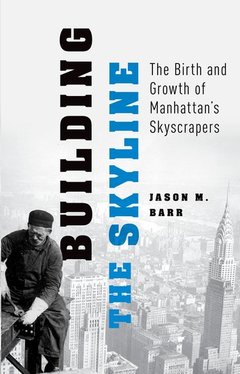Building the Skyline The Birth and Growth of Manhattan's Skyscrapers
Langue : Anglais
Auteur : Barr Jason M.

The Manhattan skyline is one of the great wonders of the modern world. But how and why did it form? Much has been written about the city's architecture and its general history, but little work has explored the economic forces that created the skyline. This book chronicles the economic history of the Manhattan skyline. In the process, the book debunks some widely-held misconceptions about the city's history. Part I lays out the historical and environmental background that established Manhattan's real estate trajectory before the Skyscraper Revolution at the end of the 19th century. The book begins with Manhattan's natural and geological history and then moves on to how it influenced early land use and neighborhood formation, and how these early decisions eventually impacted the location of skyscrapers. Part II focuses specifically on the economic history of skyscrapers and the skyline, investigating the reasons for their heights, frequencies, locations, and shapes. The book discusses why skyscrapers emerged downtown and why they appeared three miles to the north in midtown, but not in between. Contrary to popular belief it was not due to the depths of Manhattan's bedrock, nor the presence of Grand Central Station. Rather midtown's emergence was a response to the economic and demographic forces that were taking place north of 14th Street after the Civil War. The book also presents the first rigorous investigation of the causes of the building boom during the Roaring Twenties. Contrary to conventional wisdom, the boom was largely a rational response to the economic growth of the nation and city. The last chapter investigates the value of Manhattan Island and the relationship between skyscrapers and land prices. Finally, an Epilogue offers policy recommendations for a resilient and robust future skyline.
Jason M. Barr is an associate professor of economics at Rutgers University, Newark. His areas of interests include urban economics, New York City history, and computational economics. He has published many articles in top peer-reviewed economics journals. He is one of the leading scholars on skyscraper economics. His research has been discussed widely in the media, including in the New York Times, The Economist, National Public Radio, and the New York Observer. He has taught economics at Rutgers University-Newark, Dartmouth College, and Columbia University.
Date de parution : 07-2016
Ouvrage de 456 p.
23.6x15.5 cm
Thèmes de Building the Skyline :
© 2024 LAVOISIER S.A.S.



